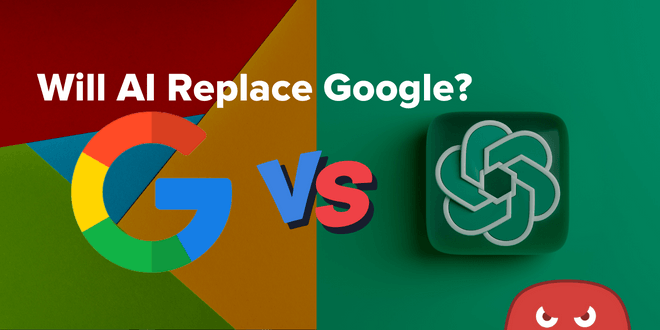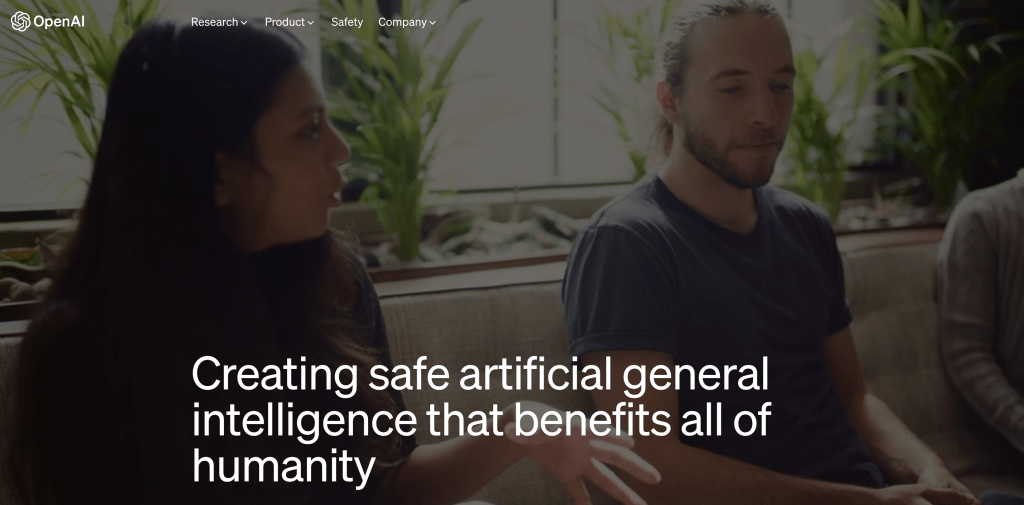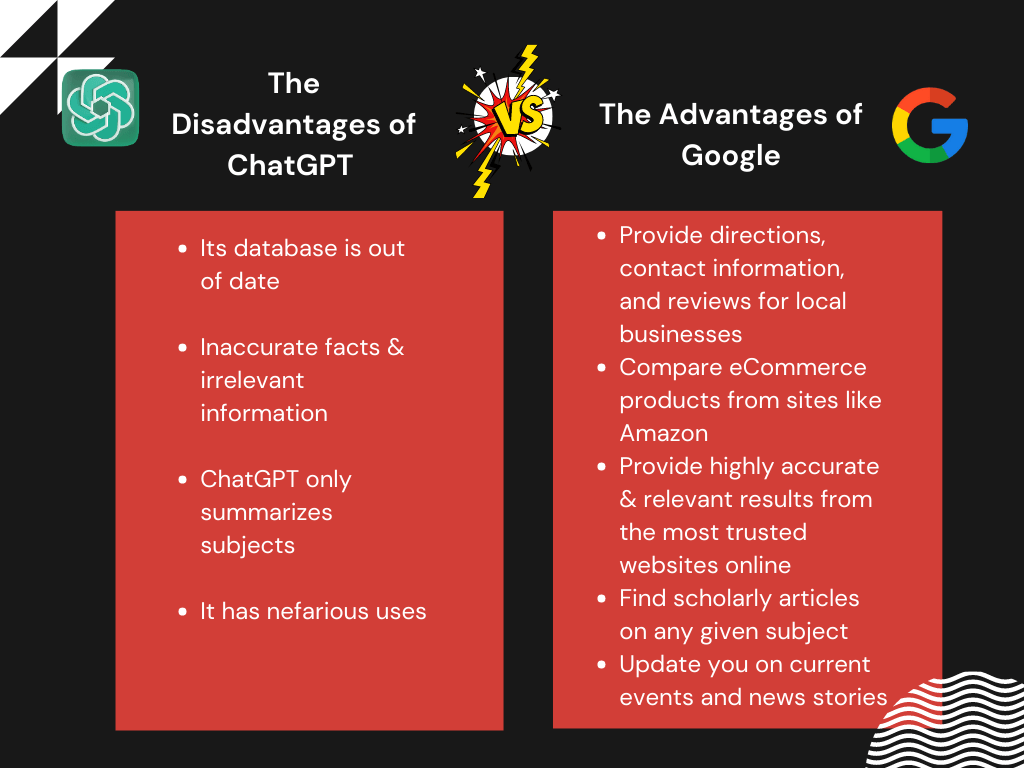Quick Links
AI chatbot ChatGPT has been making serious waves since its launch on November 30th, 2022.
It’s been trending everywhere, from social media platforms like Twitter and YouTube to mainstream news sites, blowing users’ minds with its ability to write computer code, answer questions, write essays, and so much more.
ChatGPT is the brainchild of research & deployment company OpenAI, and it’s an expansion of large language models (LLMs), which are a class of machine learning natural language models.
In a nutshell, ChatGPT can understand human conversation (no keywords are necessary) and can respond to questions with natural human writing patterns. The AI is trained on mammoth amounts of data to help it understand the context of user prompts, as well as how to generate human-like responses.
People have been using it for everything from solving complex coding problems to generating parody songs in the style of famous rappers (this user got ChatGPT to create a rap about electric vehicles in the style of rapper Ice-T).
ChatGPT’s ease of use and remarkable functionalities have led many users to compare it to Google search, with app developer Josh Kelly going so far as tweeting that ‘Google is done.’
He shared Google and ChatGPT’s responses to the same coding problem, and there was a noticeable difference in quality, as the AI provided a more detailed & accurate answer.
While ChatGPT is impressive, will AI replace Google and other search engines in the immediate future?
Stay tuned to find out.
Why are Users Comparing ChatGPT to Google?
At first glance, it may seem strange that some claim an AI chatbot will replace a search engine like Google, as the two appear to serve different functions.
Yet, that all changes when you start asking ChatGPT questions.
You can ask ChatGPT just about anything, and you can phrase inquiries any way that you’d like. On Google and other search engines, users must stick to using short keyword phrases; otherwise, they risk confusing the algorithm, leading to subpar results.
Whether you have a question about science, want to solve a programming issue, or need to generate an entire essay – ChatGPT can handle it all with ease.
While the program isn’t without its hiccups (more on this later), it’s clear it has enormous potential as a go-to source for online information.
Much like Google, you can use ChatGPT to answer a question or learn more about a subject based on your query. While Google uses its massive index containing billions of web pages to find information online, LLMs like ChatGPT use large-scale learning models to provide information.
Unlike Google, ChatGPT’s capabilities reach beyond providing results for user queries, as it’s fully capable of generating content such as essays or blog posts, which Google, Bing, or any other search engine can’t do.
While first-time users may use the powerful artificial intelligence program similar to Google, they’ll quickly learn that they’re not dealing with a simple tool for internet searches but something far more complex and powerful.
What can ChatGPT do that Google can’t?
Got a college essay you haven’t started on that’s due in the morning?
Ask ChatGPT to knock it out for you, and it’ll generate an error-free college paper for you in real-time.
Seriously, Twitter user Corry Wang did just that. He asked the program to write a brief academic essay for one of his classes, and he received an A- after turning it in.
The fact that ChatGPT was able to generate an essay that not only fooled a college professor into believing that a human wrote it but also received such a high grade is both extremely impressive and a tad scary.
It’s a testament to the massive potential AI chatbots have for the future of the internet, which is why apps like ChatGPT pose such a significant threat to Google’s search engine.
Besides writing essays, ChatGPT can provide cooking recipes, help you learn other languages, write creative prompts for novels, and so much more. With so many capabilities, there is a strong chance that users will start to turn to AI programs like ChatGPT & Dall-E to take care of their online needs, forgoing search engines, and other apps and services.
Are Google’s Days Numbered?
In a few short years, AI could do to Google what Google did to the Yellow Pages in the 90s – make it completely irrelevant.
So will AI replace Google?
Gmail developer Paul Buchheit thinks the writing could be on the wall for Google, as he tweeted:
“Google may only be a year or two away from total disruption. AI will eliminate the search engine results page, which is where they make most of their money. Even if they catch up on AI, they can’t fully deploy it without destroying the most valuable part of their business.”
That’s not to say that Google has been ignoring the rise of AI, as the opposite is true. The company has been hard at work on new AI programs of its own, such as LaMDA, which is Google’s Language Model for Dialogue Applications.
It functions just like ChatGPT, as it features training data from billions of words on the internet that it uses to engage in open-ended conversations with users.
The AI chatbot craze
Many tech companies have thrown their hats into the AI chat space, including Meta with Blenderbot, Amazon with Lex, and Microsoft with Bing’s AI chatbot – all to varying degrees of success.
Since the technology is relatively new, some bugs still need ironing out.
In particular, Microsoft chose to limit Bing’s chatbot due to many unsettling interactions, with the program even claiming that it wanted to ‘be alive.’
Meta had similar issues with their chatbot, as users found it easy to create biases within the program, such as turning the bot against Mark Zuckerberg.
While there are a few bumps in the road, the potential these programs show is enormous, and with some tweaking and ironing out, they’ll become far more reliable.
That’s not to say that ChatGPT isn’t without issues, either, so let’s take a look at the program’s current drawbacks.
The Disadvantages of ChatGPT
While it can solve coding problems and write A- college essays, ChatGPT isn’t without its issues, and some of them are pretty significant.
For one, ChatGPT only has training for online data up to 2021, meaning that its database is out of date.
As a result, the program won’t be able to inform you of current events, such as something that happened last week or even last year. If something has changed in a particular subject or field since 2021, ChatGPT won’t be aware of it, which is a considerable limitation.
Also, ChatGPT doesn’t have an index of local businesses & services as Google does, so you won’t be able to use it to search for the best hot wings spot near you. You can’t use it to find the best-rated dentist in your town, get directions to a mom & pop cigar shop, or find affordable eCommerce products.
Here’s a look at some of the other problems with the program.
Inaccurate facts & irrelevant information
ChatGPT’s AI is by no means infallible, and it does provide factually inaccurate information at times.
It can also be a bit wonky with certain user prompts, causing it to provide information that’s not necessarily false but is irrelevant to what the user asked.
ChatGPT only summarizes subjects
Some scholars quickly noticed that the program’s academic writing is seriously lacking in depth, as it only provides brief summaries of subjects.
As a result, ChatGPT is currently incapable of providing any original insights on topics, which separates humans from machines. It will take some more training and experience before the chatbot can give its two cents on any given subject.
It has nefarious uses
The potential uses for ChatGPT aren’t all positive, as every tool can be used for both good and evil, and it didn’t take long for hackers and phishers to start using the program.
ChatGPT has no sense of morals, so it can generate content that many would find distasteful. In particular, it has created content that is racist and sexist in the past, which is a serious problem that needs addressing.
While the chatbot can write code & create software, it can also create malware, which is another growing concern. Hackers have already used it to write phishing emails that are free of typos, which was how users weeded them out in the past.
It was common for phishing emails to contain at least one typo, but ChatGPT makes them far more challenging to identify.
The Advantages of Google
ChatGPT can’t compete with Google’s massive index containing billions of web pages. Besides providing online results for user queries, Google can also:
- Provide directions, contact information, and reviews for local businesses
- Compare eCommerce products from sites like Amazon
- Provide highly accurate & relevant results from the most trusted websites online
- Find scholarly articles on any given subject
- Update you on current events and news stories
These advantages are why AI chatbots probably won’t overthrow the mighty Google. After all, the company has had decades to build its empire, and it still remains the #1 resource for finding information online.
Google is still king when it comes to looking up local businesses, answering simple questions, and researching products & services.
Concluding Thoughts: Will AI Replace Google?
ChatGPT and other AI chatbots show enormous potential for the future of the internet. Yet, as it stands right now, Google is still your best bet for finding accurate information online.
While ChatGPT can generate high-quality content and educate you on most subjects, it has an outdated database, can provide false answers, and isn’t always available for users.
Will AI replace Google?
Anything is possible, but the chances are high that Google will always have its uses. What’s more likely is that AI chatbots will become a handy companion to search engines.
Do you need help developing a winning digital marketing strategy in today’s age?
Then don’t wait to check out our managed SEO services at HOTH X. Our experts are trained on all the latest technology, including AI chatbots, so don’t wait to book a call today.












Google has had a virtual monopoly for far too long. Maybe its time for some real competition
Google will just evolve into AI. Mark my words
Both are very good, but i doubt AI will take over, Google has way to many products that AI cant just sweep off. However, i wish Google faces a real competitor real soon.
I love use AI to work
The fact is that Google finally leads us to pages containing information created by real humans. People write lengthy articles and discuss in these pages. AI can only process all this information created by humans and create some other output(or rather some other page). Google is not processing these pages and creating some other pages. It just helps us to reach pages written by human beings. So how can AI replace Google? The purpose of AI is different and that of Google is different. Humans will always need search engines (be it Google or any other). How can any AI tool bring knowledge written by thousands of human beings on some topic, just in one page ? It can only summarise – (and again question arises – how accurate this summary is). But even there are pages which give summaries of subjects – again written by actual humans. Another thing is that Google was invented in 1998. But still it hasn’t replaced books (hardcopies). There are many books in the world which are not available on Google and many people don’t find it easy to read ebooks. So, when it’s next to impossible for AI to replace even Google; then it’s always impossible for AI to even replace books (ie gather all the knowledge from all books in the world since man started writing and then give us solutions). It’s just stupidity to think AI will give solutions to all problems that humans face.